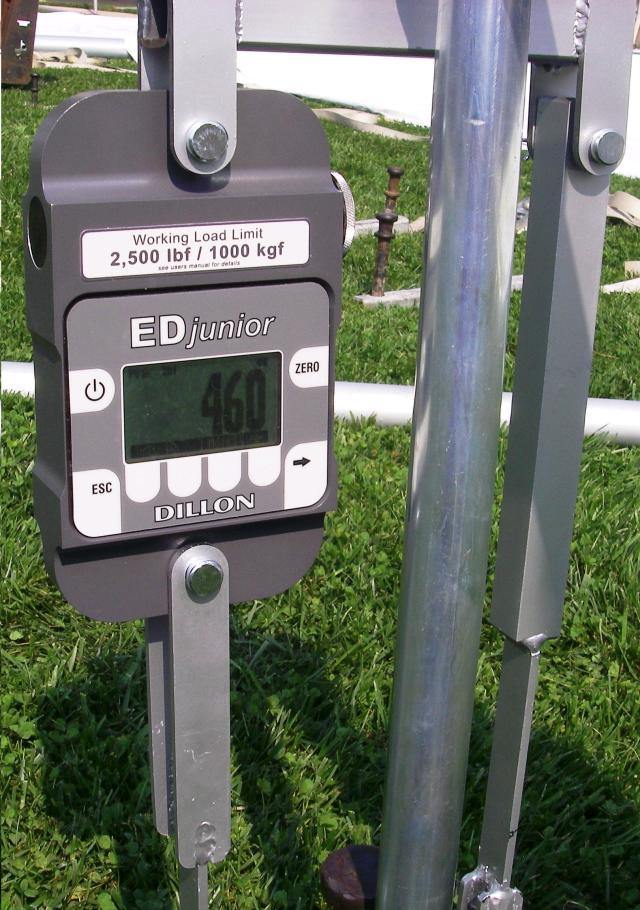Descripción
What is the holding power of your stakes? The JackJaw® Tent Stake Extractor with Certified Load Cell option can tell you!
Safety of the tent installations has always been foremost in the tent rental industry. Tent rental companies can now have peace of mind, knowing that their stakes have the holding power that exceeds the recommendations of the manufacturers of the tents in his inventory.
The JackJaw® Tent Stake Extractor with Certified Load Cell option allows tent rental companies to directly measure the holding force of test stakes that were located around their job site. The new model JackJaw® stake puller works like the thousands of JackJaw® tent stake pullers that have become the standard in the industry over the past 5 years, except that this one directly measures the pulling force that is required to pull the stake, and records the peak force on the digital readout. A proven and tested electronic load cell is incorporated into the new JackJaw® stake puller, and it reads exactly one half of the total load being placed on the test stake.
To test your stakes holding power, turn on the recording unit, and simply grab the test stakes with the jaws, as you would with any of your JackJaw stake pullers, and push down on the handle of the stake puller. Then, double the reading and record the values on the site plan, to make a permanent record. In the photo shown, the digital read out shows a Peak value of 460 lbs. These readings are measurements of the force in only one side of the JackJaw stake puller, so they have to be doubled to get the actual force required to pull the stake out of the ground. So, the readings correspond to hold forces of 920 lbs.
Since the tent ropes or straps apply force to the stakes at an angle of 30 to 45 degrees off vertical, the real holding power of the stakes should be significantly (20 to 30%) higher than the force required to pull the stakes straight out of the ground. In other words, the tension in the tent ropes or straps tend to pull the stakes sideways through the ground, and the ground is providing more resistance.
Doing a test on test stakes on job sites allows the rental company to show customers, insurance companies and tent manufacturers that they were diligent in testing the holding power of the stakes, and, when necessary, adjusting the staking plan for the tent if the ground is soft. This keeps the operation as safe as possible for customers and employees. It also helps to keep insurance premiums down by preventing losses.

